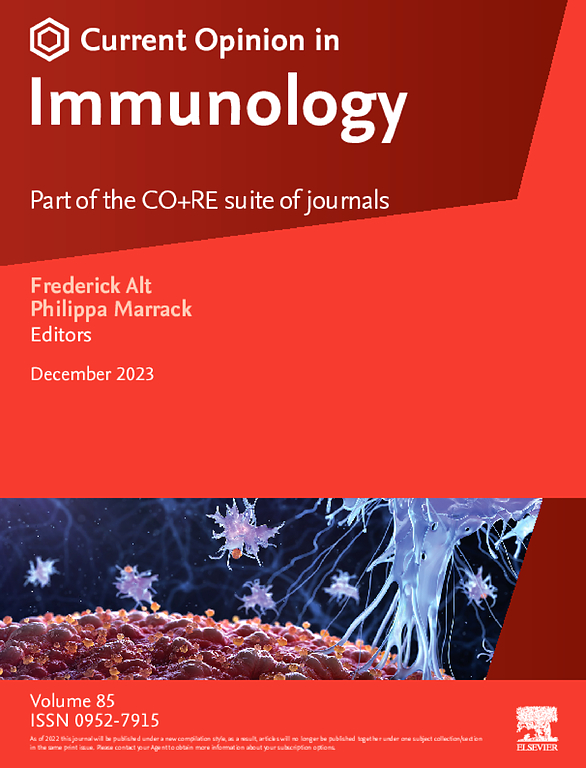结节病诊断的挑战
IF 5.8
2区 医学
Q1 IMMUNOLOGY
引用次数: 0
摘要
综述的目的结节病的诊断仍然具有挑战性。组织学表现和可变的临床表现可以模仿其他感染性、恶性和自身免疫性疾病。本综述综合了组织病理学、采样技术、成像模式和生物标志物方面的现有证据,并探讨了新兴的“组学”和人工智能工具如何提高诊断准确性。最近的发现在典型的肉芽肿病变中,局限性或“烧坏性”坏死是一种辅助发现,可出现在高达三分之一的肉瘤活检中,需要仔细的鉴别诊断检查。支气管超声引导下经支气管淋巴结穿刺已经取代纵隔镜作为一线取样工具,低温活检仍处于验证阶段。容积PET指标,如肺总糖酵解和生长抑素受体示踪剂,改进了活性评估;FDG PET/MRI联合检测可提高隐匿性心脏病的检出率。晚期支气管肺泡灌洗(BAL)免疫表型通过流式细胞术和血清,BAL和遗传生物标志物显示与炎症负担相关,但诊断价值低。在深度学习算法的支持下,多组学签名和正电子发射断层扫描与计算机断层放射组学在无创诊断确认、表型和疾病监测方面显示出有希望的结果。没有单一的检查对结节病的诊断具有结论性。需要一个综合的多学科战略。大型、多中心、多民族的研究对于将新兴人工智能工具和组学研究的数据转化和验证为临床常规至关重要。本文章由计算机程序翻译,如有差异,请以英文原文为准。
Challenges in diagnosis of sarcoidosis
Purpose of review
Diagnosing sarcoidosis remains challenging. Histology findings and a variable clinical presentation can mimic other infectious, malignant, and autoimmune diseases. This review synthesizes current evidence on histopathology, sampling techniques, imaging modalities, and biomarkers and explores how emerging ‘omics’ and artificial intelligence tools may sharpen diagnostic accuracy.
Recent findings
Within the typical granulomatous lesions, limited or ‘burned-out’ necrosis is an ancillary finding, which can be present in up to one-third of sarcoid biopsies, and demands a careful differential diagnostic work-up. Endobronchial ultrasound–guided transbronchial needle aspiration of lymph nodes has replaced mediastinoscopy as first-line sampling tool, while cryobiopsy is still under validation. Volumetric PET metrics such as total lung glycolysis and somatostatin-receptor tracers refine activity assessment; combined FDG PET/MRI improves detection of occult cardiac disease. Advanced bronchoalveolar lavage (BAL) immunophenotyping via flow cytometry and serum, BAL, and genetic biomarkers show to correlate with inflammatory burden but have low diagnostic value. Multi-omics signatures and Positron Emission Tomography with Computer Tomography radiomics, supported by deep-learning algorithms, show promising results for noninvasive diagnostic confirmation, phenotyping, and disease monitoring.
Summary
No single test is conclusive for diagnosing sarcoidosis. An integrated, multidisciplinary strategy is needed. Large, multicenter, and multiethnic studies are essential to translate and validate data from emerging AI tools and -omics research into clinical routine.
求助全文
通过发布文献求助,成功后即可免费获取论文全文。
去求助
来源期刊
CiteScore
13.30
自引率
1.40%
发文量
94
审稿时长
67 days
期刊介绍:
Current Opinion in Immunology aims to stimulate scientifically grounded, interdisciplinary, multi-scale debate and exchange of ideas. It contains polished, concise and timely reviews and opinions, with particular emphasis on those articles published in the past two years. In addition to describing recent trends, the authors are encouraged to give their subjective opinion of the topics discussed.
In Current Opinion in Immunology we help the reader by providing in a systematic manner: 1. The views of experts on current advances in their field in a clear and readable form. 2. Evaluations of the most interesting papers, annotated by experts, from the great wealth of original publications.
Current Opinion in Immunology will serve as an invaluable source of information for researchers, lecturers, teachers, professionals, policy makers and students.
Current Opinion in Immunology builds on Elsevier''s reputation for excellence in scientific publishing and long-standing commitment to communicating reproducible biomedical research targeted at improving human health. It is a companion to the new Gold Open Access journal Current Research in Immunology and is part of the Current Opinion and Research(CO+RE) suite of journals. All CO+RE journals leverage the Current Opinion legacy-of editorial excellence, high-impact, and global reach-to ensure they are a widely read resource that is integral to scientists'' workflow.

 求助内容:
求助内容: 应助结果提醒方式:
应助结果提醒方式:


